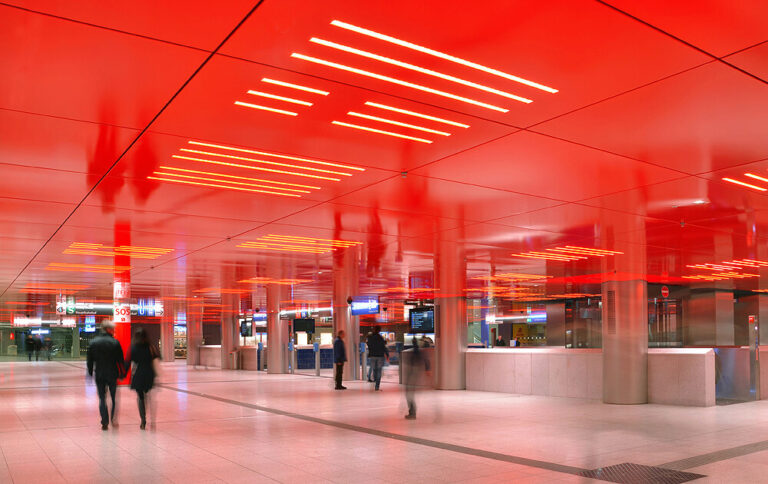Transition in Packaging by Design
bayern design and NürnbergMesse to present innovative packaging concepts at the FACHPACK trade fair
Nuremberg, Germany – NürnbergMesse and bayern design have organized a special show titled Transition in Packaging By Design to take place in Hall 7 (booth 432). Analogously to the theme of the trade fair, it will highlight packaging design opportunities brought about by transition processes in society founded on consumers’ ever-changing behaviors. Companies are being challenged to act sustainably in terms of ecology and customer retention. In cooperation with NürnbergMesse, bayern design will present the responses designers and companies are making to these transformations. Ranging from A as in augmented reality through U as in urn to Z as in the zeerooo multi-use system, the innovations on display will provide sources of inspiration for new trends and impulses in the packaging industry and in society. In addition to being exhibited, the pieces will be discussed at a live event at PACKBOX.
Address, Amaze, Advance
Under the keywords ‘Address’, ‘Amaze’ and ‘Advance’ the special show features selected examples of packaging design in which designers and companies make strategic use of packaging: as a means of communication or interaction, or as a field of application for sustainable materials development. The packaging specialists see their mandate for redesign as a playing field where they rely on creative, technical, and communicative innovations to advance sustainability as well as aesthetics.
Address
The packaging concepts submitted by four Münster School of Design students – Madeline Hesse, Elisabeth Freymüller, Frederic Vennemeyer and Jonas Zerr – and by snoopstar address key issues and convey them convincingly. The Münster project addresses the contamination of groundwater through the careless disposal of cigarette butts. The Input cigarette pack features a pull-out tray to house butts until they can be disposed of properly. The Regionique brand of the German company Produktfabrik conveys environmental awareness through transparency: A QR code on each package gives customers an insight into the production and supply chains of the respective product. The concept raises consumer awareness of the problem and at the same time provides a practical way to contribute to change. However, many packaging concepts do not show their sustainable side at first glance. snoopstar uses augmented reality to make sustainable packaging identifiable as such and thus fit for the future.
Advance
Bio-based packaging helps advance society in many ways. Among other advantages, it waives the use of environmentally harmful Styrofoam for impact-sensitive products, the use of disposable food packaging and the use of non-degradable materials in the manufacture of ornamental urns for human remains. In cooperation with GROWN bio, Amen Candles will present a protective mycelium (fungus roots) and hemp fiber wrap. This all-natural packaging is used to send Amen’s fragile and temperature-sensitive scented candles securely around the world. Algae- and plant-based materials are used by the British cleantech company Notpla to avoid disposable packaging wherever possible. This means the edible packaging can simply be swallowed along with the drink. When hand-making ornamental urns from premium-quality paper, urnfold focuses on three things: sustainability, modern aesthetics, and the support of a more personalized culture of grief. The paper fulfills the actual purpose of ornamental urns because it upgrades the mandatory receptacle for ashes optically and emotionally and it decomposes in the ground completely, leaving no residue.
Amaze
The packaging concepts created by designers Hélène Fontaine (Burg Giebichenstein Kunsthochschule Halle) and Sarah Klein are amazingly convincing. Most food packaging is not user-friendly; often tabs are too small and difficult to pull and/or impossible-to-remove lids make handling the foods cumbersome, particularly for people with physical limitations. Titled i‑si, Fontaine’s packaging dish has a protruding base and a foil cover with an extended tab. It requires little force to open – even with just one hand. ReWrap, by Sarah Klein, is an innovative solution for transporting food-to-go. The flexibility of the product is due to diverse folding and wrapping techniques. The design of the packaging for French fries and similar foods resembles classic French fries packaging, while falafels still are wrapped as usual. For efficient waste elimination, ReWrap can be reused up to 4000 times and can be offered as part of a refundable-deposit system.
Other exhibitors at the special show include Kebag (döner packaging), outnature (packaging made from fibers from the silphia plant), Philips Hue smart lighting (interactive packaging featuring an alternating colors mechanism), Syntegon (blister meets paper), Van Genechten Packaging (100% recyclable chocolate packaging PurePac without added wrapping material), Vöslauer (Artists for Tomorrow edition), and zerooo Mehrwegsystem (reusable jars and refundable bottles).
In line with the three categories of the special show, on Wednesday September 28 the speakers will focus on packaging design as a means of communication and interaction and as a field of application for sustainable materials development. They will discuss their concepts live at PACKBOX from 1:00 p.m. to 2:00 p.m. The packaging experts Thilo Reichert (snoopstar), entrepreneur Sabine Bingenheimer (Produktfabrik), Margaux Deguerre (Head of Marketing Notpla) and founder Kristina Steinhauf (Urnfold) will speak.
Contact
Dr. Kilian Steiner
+49 176 45536984
steiner@bayern-design.de




